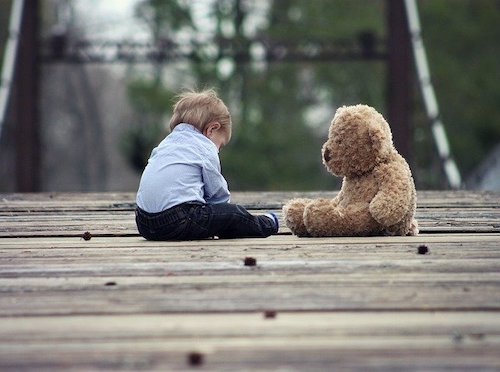
Adoption: Dispelling Four Common Myths
November is National Adoption Month—a month for focusing on how ministries and organizations can best seek to care for waiting and vulnerable children locally and around the world.
It’s also a month for focusing on how we can best support families who have answered the call of adoption or foster care. But in order to understand how to best serve these families, we need to dispel a few common myths so that we can to gain greater comprehension and awareness.
Myth #1: Agencies find children for families.
Truth: Agencies find families for children.
When we view adoption as finding families for children, we create a major mindset shift—a shift that:
- Places the waiting and vulnerable children as the priority
- Contributes to and upholds ethical adoption practices
- Rejects the idea that waiting children are a commodity
- Safeguards a child’s story as just that—his or her story (to share)
- Advocates for birth families[1]
Dr. Sandra Glahn, seminary professor and adoptive mother, gives Ten Course Corrections for Everyone to help the church frame adoption in a proper and non-dysfunctional light.
Myth #2: A newly adopted or foster child who easily goes to strangers, friends, and extended family is well adjusted and attaching to their new family.
Truth: A newly adopted child who easily goes to strangers, friends, and family may be struggling to attach to their new family.
When a child has spent time in an orphanage or moved between several different foster families, he or she has no concept of appropriate “stranger danger.” Outgoing behavior initially means that the child sees every adult as an acceptable caregiver. The definition of this behavior is called “indiscriminate affection.”
Newly adopted children need to learn who are their primary caregivers (i.e. Mom and/or Dad) and attachment and bonding takes time. This means at the beginning a parent will be the only one who feeds, bathes, and plays with the child. This is known as a time of “cocooning.”
Cocooning is what normally happens during the first few months of a newborn’s life. A child learns his or her parent’s voice. They learn that when they cry, mom or dad will come to their aid and give comfort, care, and food. A parent will meet the newborn’s needs over and over again in these early months.
This level of intense care is typical and expected for most biological parents, though it is never labeled as “cocooning.” Adoptive parents have to essentially recreate this type of nurturing space for their child, even if a child is much older.
Myth #3: The proverbial marathon of adoption is over once a family has the child in their arms.
Truth: The marathon has just begun.
Adoption and foster care is a journey, not a destination. It’s been said that “it takes a village to raise a child,” and this is especially true for adoption and foster families. While it is common to provide meals, babysitting (of the family’s other children), housework help, and the like when a family first brings a child home, quite often that help drops off after the first few months.
But the reality is that children who have experienced adverse childhood experiences will need unique care for years and perhaps their entire lives. Specialized therapies (e.g. music therapy, play therapy), surgeries, ongoing medical management, counseling, and more can drain a family’s emotional and physical well being, especially for the primary caregiver of the family. And it’s hard to ask for help. It just is.
Using the marathon analogy, an athlete needs encouragement not just at the start of the race when they are feeling nervous, yet strong. But he or she needs even greater encouragement in the hard middle, at the dark moments, when they are tired and weary, and especially near the intermediate and multiple finish lines during life.
How can you help? Buy them a wholesale pack of paper plates and often (grace = not having to do the dishes). Mow their yard. If you’re a coworker, donate vacation time when they need to travel for medical care. There are endless, practical ideas.
In the video, Equipped to Love Module 1: How to Support and Encourage Adoptive & Foster Families, Lifeline Advocacy & Education explains this list of 10 things that the body of Christ can do to support adoptive and foster families:
- Encourage
- Connect
- Assist with household tasks
- Provide financial and material needs
- Provide care for a family’s non-special needs children
- Ask questions
- Look to parents for guidance regarding interactions with an adopted/foster child
- Read and educate yourself about adoption and/or foster care
- Celebrate small and large victories
- Pray
You can find additional ideas in my other articles about adoption:
Myth #4: Adopted children with no known medical needs do not have special needs.
Truth: All adopted children (with or without medical needs) have experienced some measure of loss and trauma, which may require their unique needs to be met differently.
Adoption equals trauma. The majority of brain development occurs in utero and the first five years of a child’s life. Thus when a pregnancy is stressful, there is a loss of a primary caregiver (e.g. birth mother), early abuse or neglect occurs, or even when life-saving or necessary medical care is given, stress hormones are produced.
An excess of these stress hormones can alter how the brain is built during these key developmental years. The areas of the brain that are affected impact a child’s ability to have:
- Attachment/Bonding
- Emotion and behavior regulation
- Impulse control
- Language development
- Ability to focus and maintain attention
- Good self-esteem[2]
Additionally, these traumas are stored in a child’s implicit, sensory memory.[3] A child cannot explain these traumas by putting them into words. But a child might alter their behaviors, beliefs, process information, and interpret life differently because of these implicit memories.
There is hope, however. But it’s a long road that requires time, education, and a different type of parenting. Author and adoptive parent Helen Oakwater refers to it as “therapeutic re-parenting.”
One area in which therapeutic re-parenting might look different is in the methods of discipline. Corporal punishment and yelling and scolding are non-helpful ways to discipline. It also means the Dr. Dobson cause/effect/behavioral therapy usually does not work when kids have processing disorders.
From an uneducated perspective, it might look like an adoptive parent is spoiling or coddling their child. But most children who have experienced trauma require an “attachment-based, trauma-informed, non-authoritarian” approach to discipline (i.e. Trust-Based Relational Intervention).
How can we help?
We can educate ourselves. Even just 15 minutes spent reading one of the following websites will shine light on an adoptive and foster parent’s challenges and help us give them grace, non-judgmental ears, and a better understanding of how to pray. It might also impact how we establish and run our church programs.
Closing: Now that these common myths have been dispelled and greater comprehension and awareness have been gained; I challenge you with a few questions:
- How can we—the church—give grace and support to adoptive and foster care families during the month of November and year-round?
- How can we change the narrative surrounding adoption and foster care?
- How can we provide for families in practical ways?
I look forward to hearing your suggestions and reading your comments.
A special thank you to fellow advocate and adoptive mom, Amanda Greavu, for her review and input of this blog article.
Related articles:
What Not to Say: Adoption by Sue Bohlin
Adoption Awareness Month: The Broken Road That Led to Her by Dr. Sandra Glahn
Use Positive Adoption Language by Dr. Sandra Glahn
Image by Cheryl Holt from Pixabay.
[1] Adopt Well (www.adoptwell.com)
[2] Trauma and Brain Development: What Adoptive Parents Should Know
[3] Why Are These Children Any Different?
This blog article was originally posted on November 9, 2020.




